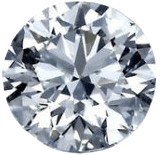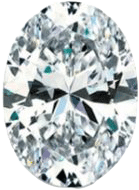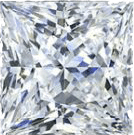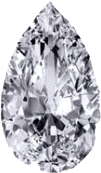Ahh, the elusive 4Cs of diamonds. Whether you’ve heard of them or not, strap in for the ultimate diamond ring education – Diamondport style. The cut, colour, clarity and carat weight of the diamond are all crucial factors to consider as you choose a gemstone. Whilst some factors are more important than others, what’s most important is that your diamond merchant knows exactly what they’re doing, and that is one thing Diamondport’s Ashley Portas can guarantee.
In addition to the diamond 4Cs, there are further crucial grading standards beyond the diamond charts that Ashley Portas, owner of Diamondport, takes into consideration when hand-selecting each and every diamond.
It’s important to have a trusted professional on your side when purchasing diamonds so you can pick a stunning gem and avoid inferior diamonds, particularly on the online market.

Cuts of diamond rings can occur in a multitude of shapes – and we’ll help you to choose the diamond ring shape you’ll love best.
Round brilliant-cut diamonds are by far the most popular engagement ring cut and the most expensive. They’re proven to refract the most light and give the most dazzling scintillation. Whereas, fancy cut (such as emerald, pear and cushion cut) diamonds are generally less expensive. Diamond crystals occur naturally in a squarish shape, so Asscher and princess cut diamonds waste less of the rough diamond. Cutting a round brilliant diamond involves cutting away and wasting more of the rough, and hence a higher price tag.





The most common diamond cuts used in rings are:
At Diamondport, we purchase from some of the world’s best diamond cutters. They use state of the art laser cutting equipment to shape the diamonds in the most precise way possible.
The best diamond cut is one that yields the best size and refracts light beautifully. Millions of dollars have been invested worldwide into researching the best diamond cuts; for instance, the ultimate ratio’s a round brilliant cut diamond. During a Diamondport consultation, our experts will talk you through the various cuts and quality of cuts and recommend the best cut for your style and price range

To learn more, have a look at our extensive diamond shape guide which explains the different shapes and cuts in further depth.
Diamonds occur in a spectrum of colours, from the prized colourless (some say ‘white’) to the less common but still gorgeous yellow diamonds. We tend to sell colourless and near colourless diamonds; D through to H on the diamond colour chart. It’s actually very difficult to distinguish between two colour grades, for instance between a D and F diamond. Therefore, the colour element is considered less important than the cut in the 4Cs.
Pink diamonds are extremely rare and very expensive. The Argyle Diamond Mine in Western Australia which supplied the majority of the world’s pink diamonds is now closed, meaning that there are no consistent sources of pink diamonds with only a mere trickle of pink diamonds coming from Africa.
So, how much is a pink diamond worth? A quality 1-carat pink diamond may cost around $1,200,000. By comparison, a similar quality 1-carat colourless diamond retails for around $13,000 (as of November 2021). If you love the look of pink diamonds but it is out of budget, a more affordable option is to surround a white diamond with small pink diamonds, possibly set in rose gold. Another alternative is a pink sapphire.
Clarity refers to the degree of flaws or inclusions in a diamond and is graded on a scale. This scale starts at Internally Flawless, IF, and goes all the way to Included Diamonds. View our diamond quality chart below for reference.
At Diamondport, we typically recommend VS2, S11 and SI2 for diamond rings, yet we will work with you to choose the best stone possible given your budget. We always avoid flaws that are visible to the eye and big flaws that can compromise a diamond’s strength and make it less stable. A hard knock to a heavily flawed diamond could cleave it in half – we’ll help you to carefully select your diamond to ensure it is eye clean and free from major flaws. I1, I2 and I3 diamonds are perfect for earrings and pendants – keep this in mind, because it might not be as expensive as you think to create a lovely gift down the track.







Diamonds are measured by their carat weight, and one carat is equal to 0.2 grams of a diamond. Diamonds get exponentially more expensive as they increase in size. For example, two half-carat diamonds will cost significantly less than a single 1-carat diamond.
A 1-carat engagement ring is the dream size for many couples and will cost approximately $14,000 to $20,000 in a solitaire platinum or gold setting. If this is out of your budget, we can help to create a 0.90-carat superior quality diamond ring that appears as big as a 1-carat ring, for $3,000 to $5,000 less. Another alternative is lab-grown diamonds. The Diamondport Diamond Experts can help to choose the right diamond type and size for you.
Round brilliant diamonds command a premium compared to fancy cut diamonds, however, the Diamondport experts can help you to choose the right cut for your budget and preference. An oval solitaire or a cushion cut diamond ring shape makes for an equally stunning engagement ring at a significantly lower price. Additionally, surrounding the centre stone with a halo of diamonds, or a scintillating diamond band can boost the total carat weight and overall size of the ring.

When shopping for a diamond, be sure to avoid any treated or enhanced diamonds. Treated or enhanced diamonds have been drilled, treated with acid to get rid of carbon and filled with resin to mask their flaws. Essentially, it’s a cheap diamond riddled with flaws that have been treated to have its clarity enhanced. If it looks like you’ve found a bargain, you may have in fact found a treated or enhanced diamond.
Why avoid treated and enhanced diamonds? Basically, they’re duds – often the resin won’t withstand heat treatment, and something as simple as resizing the band will crack the diamond. Treated and enhanced diamonds should (but don’t always) come with a handling certificate so that jewellers can be fully aware of the risks before cleaning or working on the ring. Australian jewellers aren’t used to working with treated diamonds, so buyers beware.
Established in 2003, the Kimberley Process is an international certification scheme that regulates the rough diamond trade, and aims to prevent the flow of conflict diamonds.
The Kimberley Process Certification Scheme (KPCS) outlines the rules that govern ethical trade. Diamondport Jewellers is proud to only trade with organisations who are signatories to the Kimberley Process. We work only with ethical providers to hand-select high-quality, ethical diamonds.
Discover our extensive ring collection at a private consultation tailored specifically to you.
Address: Suite 402, Level 4,
180 Queen Street, Brisbane City, 4000